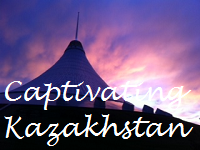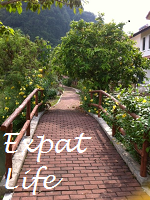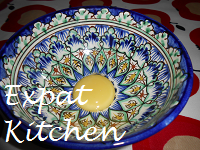A little earlier I wrote a post about
shopping in Kazakh supermarkets. We can get most of the
items we want from those supermarkets but I tend to find that certain things
are better bought from the bazaars.
When we first arrived I was surprised to find that the quality of
fruit and vegetable in the supermarkets is fairly low and that the prices are
expensive. I asked our housekeeper where
she did her shopping and she directed me to go to the bazaars.
There are a few to choose from, the best are the Centralni
(which is on the way out of town not in the Centre as one would expect) although
that suffered a fire recently, Eusasia which is more like a mall with a lot of
small independent shops and Artyum, a cross between a bazaar and a shopping mall, which is my favorite place to go. Artyum is not anything like a bazaar of one’s
imagination. It holds no echoes of the
Moroccan Souks, the Istanbul Grand Bazaar or even the bazaars we used to visit
in Diyarbakir. It is a large, square,
concrete edifice close to the centre of the old town. The first time I went there I prepared for
disappointment but this changed as soon as we walked inside.
 |
| Ground floor of Artyum Bazaar |
The ground floor has three corridors of small shops which are lined with food stalls. There is a meat market with the meat
displayed underneath pictures of the animal of origin. I do not buy meat there, however, as I am
never certain how long it has been since butchering and it does not always look
or smell fresh. The small shops sell all
sorts of dried and packaged goods, from cereal to instant noodles, juice to
sweets. The real benefit to shopping
here, however, lies in the stalls that line the rows outside the shops. These sell fresh fruit and vegetables
throughout the year. While the
supermarkets seem to carry old, poor quality specimens the stalls always have a
good selection of high quality produce.
The stall holders are very friendly and will usually allow you to choose your own so you can be sure of
avoiding the rotten pieces. They go to a lot of trouble to display their wares in interesting patterns
and spray them regularly with water to keep them looking fresh and tasty.
 |
| Friendly stall holders display their wares |
It always surprises me when some expatriates
complain about the poor variety of fresh ‘greens’ in the winter months as,
other than salad I have never found them difficult to buy. Herbs can be difficult to source and expensive to buy in
winter but I have followed the suggestion of my housekeeper and buy them at the
end of summer when they are plentiful and cheap and then store them in the
freezer. Artyum is a good place to practice Russian, the stall holders will happily give you the proper Russian or Kazakh name for any of the vegetables if you ask. One stall holder I go to regularly even tested me each visit to see if I could remember what she had taught me the last time.
 |
| The stalls are beautifully set out |
Interspersed between the stalls selling fresh produce you
can find stalls with dried fruit, spices and pulses. I usually pick up some dried chickpeas to
make hummus and some dried fruit for a family snack. Kazakhstan has brought the concept of dried
fruit to a whole new level. Of course we
can buy the usual raisins and sultanas, dried apple and apricots but we can
also buy dried pineapple, peach and kiwi.
As you reach the back of Artyum there is a ‘gardening center
of sorts. Plants from the florists are
expensive but some really beautiful plants can be bought here for about 1/3 of
the price. A lot of the gardening stalls
sell seeds and I think I will buy some kitchen herbs and possibly some cut and
come again salad to sow next winter.
 |
| Artyum's Garden Centre |
The second floor (Kazakhstan follows the American rather
than the European floor numbering tradition) has a range of shops selling
homeware, small pets and pet supplies and shoes, there is also a wide range of
shops that sell Kazakh souvenirs. These
range from decorative (!) plates and rather tasteless statues of horses and the
Baiterek to the distinctive Kazakh felt work.
We bought our vacuum cleaner here and the place is such a warren that every
visit turns up something new. I was over
the moon on my last visit to find a shop selling hide chews for dogs. Our poor girl has been putting up with
carrots instead of chews since we arrived here.
She is very fond of carrots which do just as good a job of cleaning her
teeth but I know she does not find them as satisfying.
 |
| Souvenirs of Kazakhstan |
The third floor is full of fashion shops selling clothes for
men, women and children. You can get
evening gowns, lingerie, suits and sports ware.
In the winter it is possible to buy Shubas (fur coats) for half or even
one third the price of the shops in the major malls and some of the shops sell
the beautiful fur hats that most women here wear over the winter. The debate on fur rages heavily in Europe and
America but here in Kazakhstan it is seen as the most practical material to
cope with the cold as it is both warm and windproof.
The upper floors carry a range of furniture, craft shops and
beauty salons. The furniture in Artyum
is mostly Chinese imports and does not always appeal to western tastes. Furniture is expensive here in Astana and the
bazaars are about the only place to get any at prices I would consider
approaching reasonable.
Click on the picture for more posts on life in Kazakhstan.











